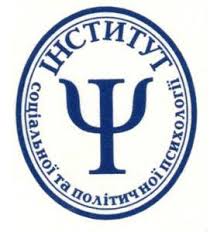Group stereotypes and symbols of overcoming difficult social situations in the image of small groups
DOI:
https://doi.org/10.32437/MHGCJ-2019(0).69Keywords:
symbols of a group, group stereotypes, small group, group symbolsAbstract
Introduction. Sometimes a person meets with complex social situations. How a person lives these situations down? What is the experience that supports and drives a person to recovery? How does the group help for a person in this? These questions now arise for each of us, because there is no person in the world who would have had the experience of living in complex social situations
Purpose. The purpose of the article is to describe the results of the study of group stereotypes and the symbolism of complex social situations in small groups of different directions.
Methodology. The sample of empirical research is 132 individuals - 16 groups of different directions: therapeutic (2), educational (7) and crisis (5) (real groups that were in situations of conflict and crisis) and self-help groups (2). Self-help groups are a group of families of demobilized soldiers (heterogeneous) and a group of veterans.
The empirical study was conducted in 2 stages. In the first stage, the questionnaire “I am in the group” was prepared and tested. It consists of 21 questions and demographic data of the respondents (age, gender). In the second stage of the empirical study, the seminar “Difficult Social Situations: Experiences of Living and Overcoming” was conducted in the study groups, followed by a survey of respondents. The duration of the seminar is 3-4 hours, depending on the needs of the group
Results. The article presents the results of an empirical study of group stereotypes and symbols in the image of small groups in complex social situations. The research identified stereotypical perceptions of the group and overcoming difficult social situations, outlined by the author as external and intra-group stereotypes. External group stereotypes include the destructive, relatively destructive, conditionally constructive and constructive groups of stereotypes described by the respondents. The groups of stereotypes pertaining to external groups are described in detail: relatively destructive (Uniqueness, Closeness and Complexity) and conditionally constructive (Causality and Willingness). Intra-group stereotypes are indicated too. Also, the article highlights a number of group symbols and group processes highlighted by the respondents, describes the analysis of the results of the “Symbolization of experience” methodology. Typization of symbolization of complex social situations and ways of overcoming them is presented. The symbols of this process are determined by the respondents by those symbols that demonstrate the dynamics (or transformation) of the character itself, the dynamics of the plot development, and the abstract ones, which have internal, not obvious, outside logic. Examples of these characters are described.
Conclusion. The analysis of the results of the study showed that group stereotypes play a key role in predicting strategies for overcoming difficult social situations, and symbolizing this process helps to find support and help, both within and outside the group









 E-mail us: viktor.vus@mhgcj.org
E-mail us: viktor.vus@mhgcj.org 